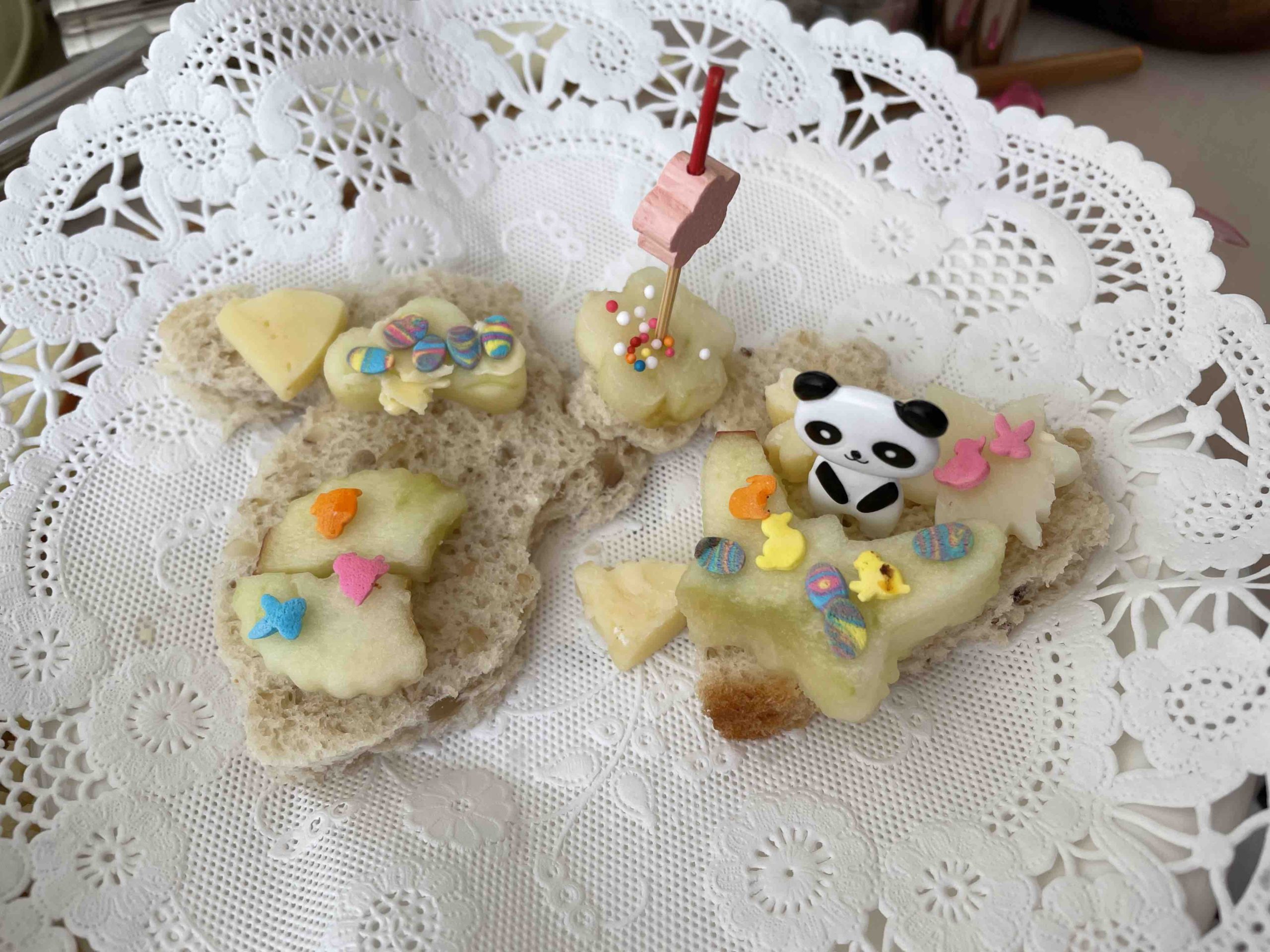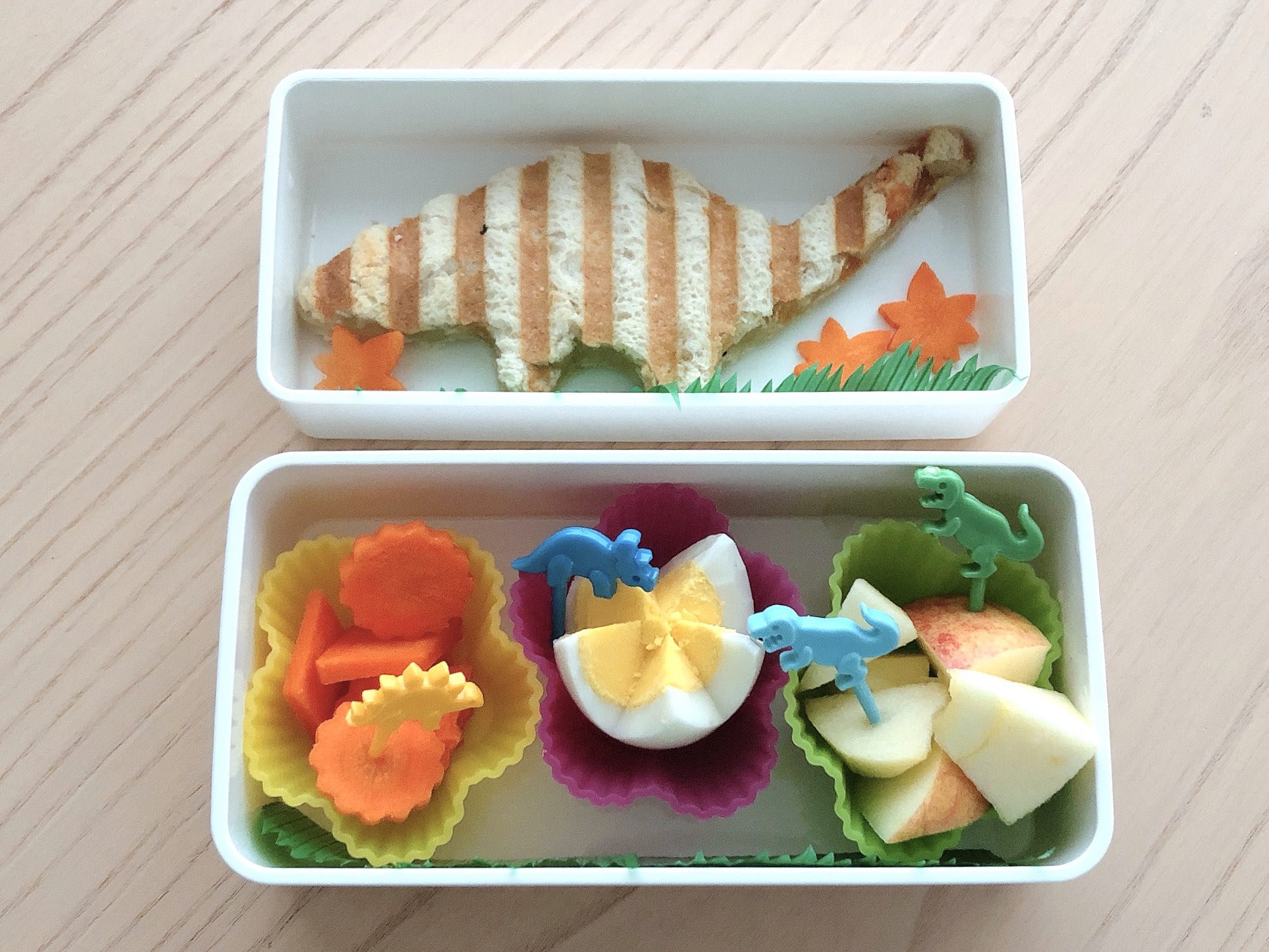How to Develop Healthy Eating Habits in Grandkids
Every food occasion is an opportunity to develop healthy eating habits in grandkids. But it can be tempting to indulge them with candy, soda, and chips, instead.
So, I asked a dietitian friend, Elizabeth Ward, MS, RD, for tips on how to become a nutrition-supportive grandparent. Elizabeth writes an informative nutrition blog, Better is the New Perfect, and is the author of several books.
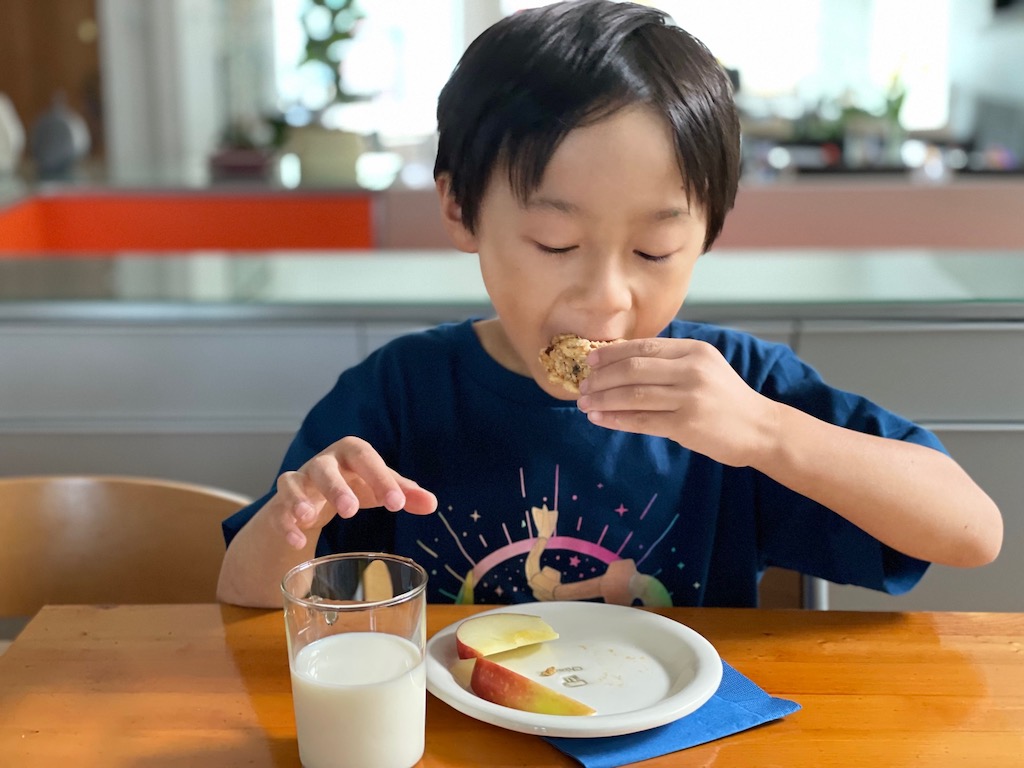
Having raised three daughters, Elizabeth knows the challenges of developing healthy eating habits in kids. And while she has written books about childhood nutrition and is a nutrition expert, she says that most of her expertise was gained hands-on, from being mother.
Here are five helpful tips Elizabeth shared:
Tip #1 Be a Role Model
“Kids look to parents and all adults as examples,” Elizabeth notes. “Kids absorb everything. Even if you try to hide what you eat, they seem to know. They get the vibe.
“If the children’s parents are trying to instill healthy eating habits in their kids and you undermine their wishes, there could be conflict between you and the parents, and conflict in child’s mind as well,” she cautions.
The best way to be supportive is to try to eat the way kids eat at home, especially if you are with them all day, the dietitian says.
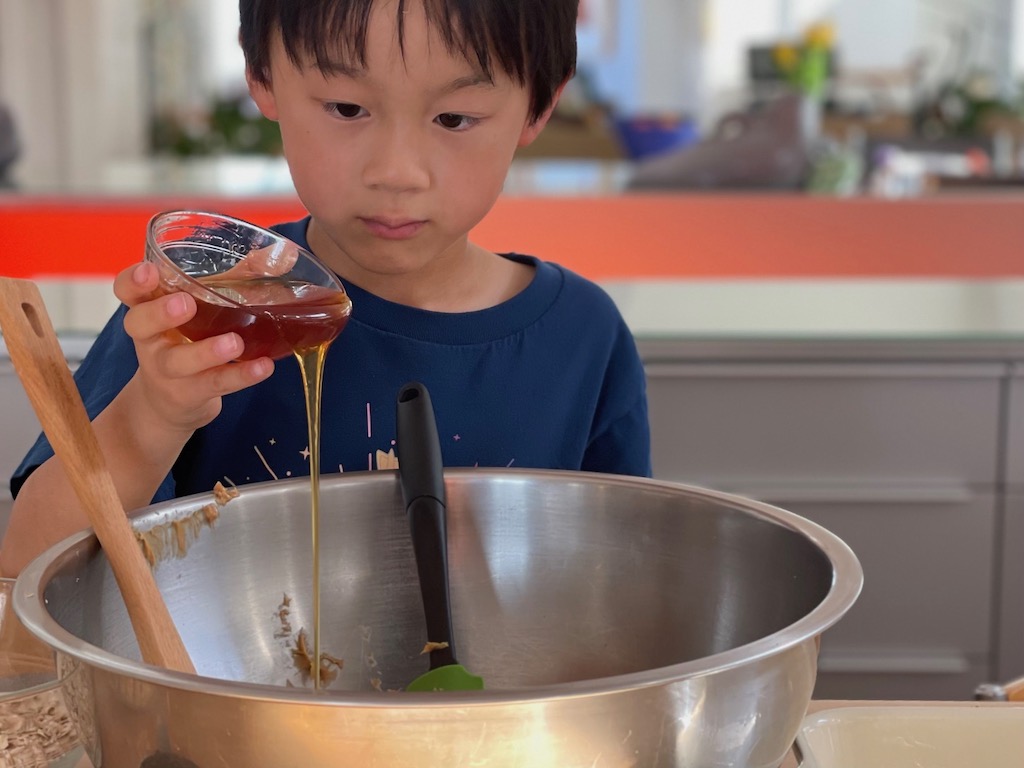
Tip #2: How to Talk about Food
To begin with, Elizabeth doesn’t categorize food as good for you or bad for you. Instead, she talks about ‘everyday foods‘ and ‘sometimes foods.’
“They are all food—so there’s no moral judgment attached,” she explains.
“But all foods don’t have the same qualities, so some are not as good for you as others. Older kids can understand how food nourishes, how it makes them feel good, and how it gives them energy on the playing field and in the classroom. They get that,” she explains. “They don’t respond to messages about good and bad.
“For younger kids, keep sometimes foods out of sight. You can’t rationalize with a four-year-old.”
Tip #3: Make Snacks Count
“Snacks should be nutritious mini-meals,” Elizabeth says. “Especially for younger children with smaller tummies
“It’s okay if the child doesn’t eat much at the next meal if the meal before was healthy. But, if they loaded up on four cookies and a juice drink and they aren’t able to eat dinner, they will be missing out on nutrition, having filled up on sugary foods.”
Anything can qualify as snack, according to Elizabeth. Half a grilled cheese sandwich and fruit. A peanut butter cereal bar that you can make in 5 minutes with your grandchild. (Elizabeth’s recipe below).
Have kids make their own snacks to encourage healthy eating habits.
Other options include low-sugar yogurt, fruit, peanut-butter-stuffed celery, cottage cheese, and hummus with carrot sticks. These are high-protein, nutritious foods for kids, she explains.

Tip #4: Helping the Picky Eater
First of all, Elizabeth doesn’t call them ‘picky’ eaters, because she finds the term judgmental. A better word choice, she says, is ‘selective’ eaters.
Elizabeth advises against catering to the selective eater. “Asking a three-year-old what they want for dinner doesn’t leave you the opportunity to introduce new foods to them,” she says. It could take 15 to 17 tries before a child accepts a new food.
Elizabeth suggests an important role for grandparents. “This is where grandparents can help by offering different foods from the ones a selective eater is eating every night at home. You might say, ‘Grandpa eats this and it’s delicious. Why not try a bite?’ Keep offering new foods each time. Kids may change their eating habits over time,” she says. “But don’t hassle the child. Don’t make it a battleground.”
A healthy bento lunch idea for a “selective” eater.
So, busy parents may take the path of least resistance and just give the child what they will eat, which might be pizza seven nights a week. While this strategy avoids the dinnertime hassle, it doesn’t expand the child’s palate, she observes.
“Grandparents can introduce new fruits and vegetables. Offer cheese and whole grain crackers, a fruit-and-vegetable smoothie. Explain that this is the way we eat here. Be the role model.”
Tip #5: Healthy Ways to Spoil a Child
Sometimes, grandparents like to claim the right to spoil the grandkids. And some of that ‘spoiling,’ might include indulging them in candy and sugary snacks.
To this situation, Elizabeth asks, “Can you spoil the grandkids in another way? Can it be something that’s very special to them that has nothing to do with food?” Some suggestions might include outings, like shopping trips into the city or going to a movie–just the two of you doing something fun together.
No-Bake Peanut Butter Cereal Bars
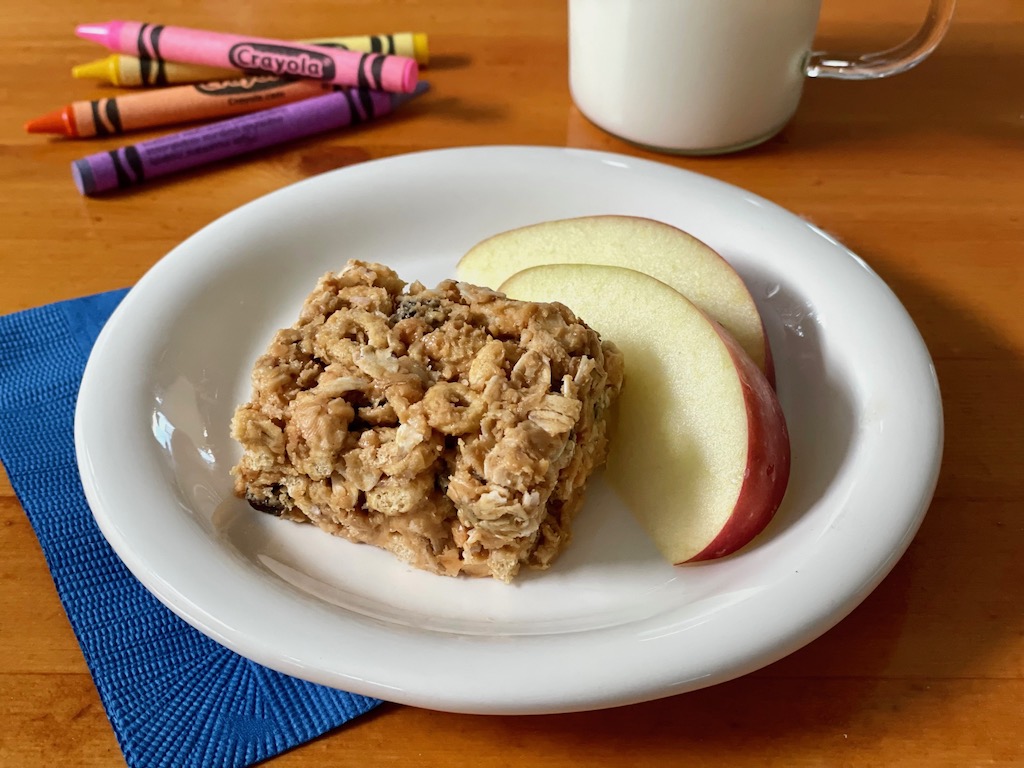
Here’s a recipe from Elizabeth to encourage healthy eating habits that I’ve adapted slightly to make with your grandchild. These delicious bars require just 5 ingredients, take 5 minutes to make, and supply 10 grams of protein and 5 grams of fiber. Plus, Elizabeth provides gluten-free, nut-free and vegan variations below.
Ingredients
- 1 1/2 cups crunchy peanut butter, use no added sugar peanut butter, if desired.
- 1/3 cup maple syrup or honey
- 1/2 cup raisins
- 2 cups oats, uncooked
- 2 cups plain Cheerios, or store-brand equivalent
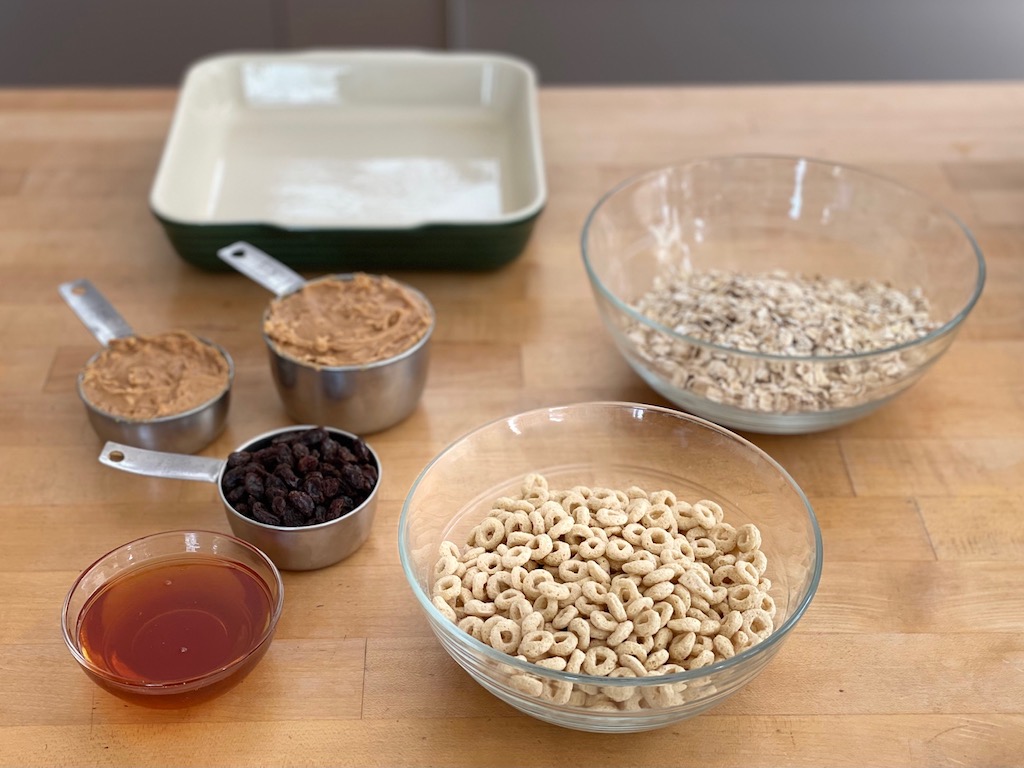
Instructions
Coat an 8″ x 8″ baking pan with cooking spray or line with parchment paper.
Combine peanut butter and syrup in a large mixing bowl and mix well. Add remaining ingredients. Press the mixture evenly into the pan. Refrigerate for at least one hour.
Cut into 12 squares. Wrap each square separately in plastic wrap for portion control. Keep refrigerated. Makes 12 bars.
Adapted from a recipe by Elizabeth Ward. Makes 12 bars.
Nutrition
Nutrition Information: Per serving: 302 calories; 17 grams fat (3 grams saturated fat); 0 cholesterol; 191 milligrams sodium; 31 grams carbohydrate; 5 grams fiber; 10 grams protein.
Notes from Elizabeth
- If you don’t have chunky peanut butter, use creamy and add 1/3 cup chopped peanuts.
- For gluten-free bars, choose certified gluten-free oats. Cheerios are gluten-free.
- For nut-free bars, use sunflower seed butter, soy nut butter, or sesame seed butter.
- For vegan bars, use maple syrup instead of honey.
- Serving suggestion from Elizabeth: Pair with 8 ounces of dairy milk or a carton of Greek yogurt and a banana. You’ll get a serving each of fruit, dairy, and whole grains, as well as at least 20 grams of protein, the minimum amount of protein you should have at every meal.
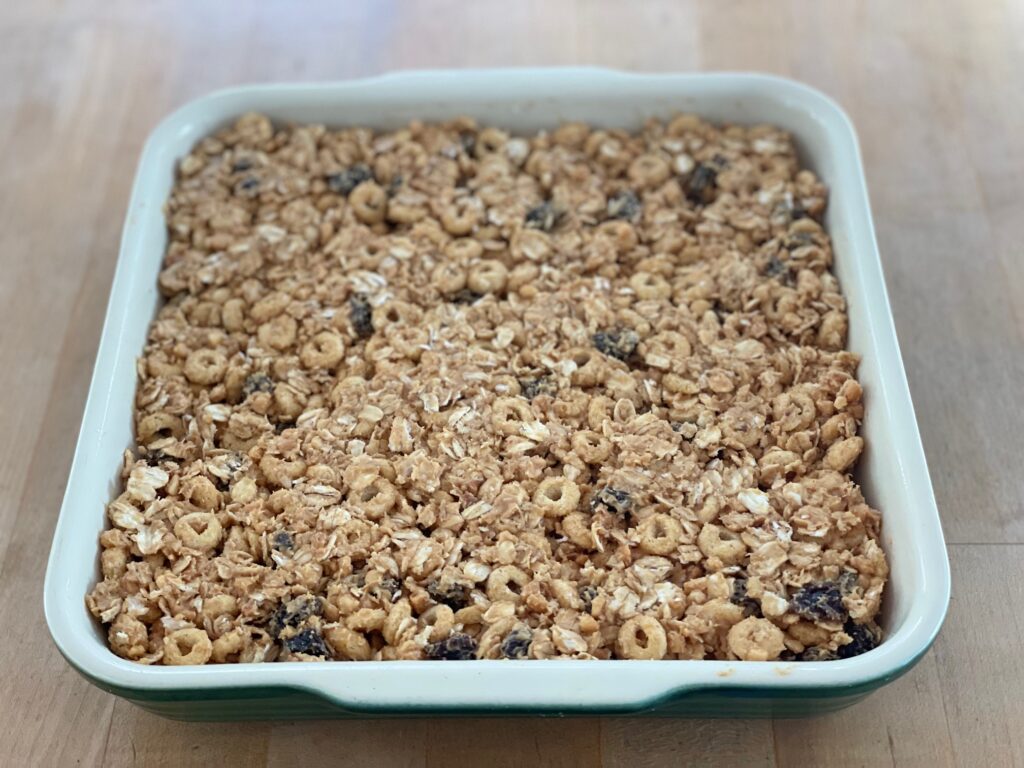
Notes from Sandy for Making Recipe with a Young Child
- Pre-measure all the ingredients in advance.
- Oil the peanut butter measuring cup(s) and the honey container before adding the sticky ingredients so they’ll slide out more easily.
- Give the child a small spatula to scoop out the ingredients.
- Be prepared to help with the mixing. A young child will have difficulty mixing the viscous peanut butter mixture with the cereals.
- Waiting an hour for the bars to firm up is a long wait for a child. Have a small snack, such as apple slices, to nibble on in the interim.
- While this is a single food prep activity, you can include this recipe in a more comprehensive summer vacation activity program for the grandkids.
Sign Up!
Don’t forget to sign up for my email newsletter. Every Wednesday, I’ll give you a new idea for an activity or insight to nurture the little ones in your life.
